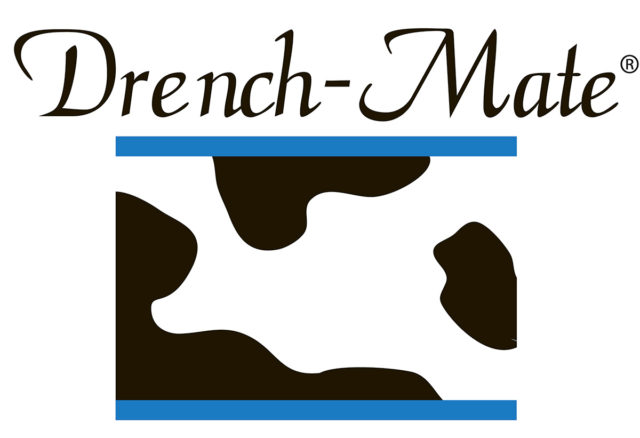Organic dairy products are drawing a substantial price premium. May dairy producer margins were ugly. June California and federal order prices improve. Rabobank sees recovery pushed into 2017. This and other U.S. dairy economic news can be found here.
Organic dairy products drawing premium prices
U.S. organic fluid milk sales are running ahead of a year earlier, and USDA’s Dairy Market News (DMN) reports organic dairy products are also drawing substantial premiums from the marketplace.
Read Dairy Economic Update: Has fluid milk sales decline ended?
Reports indicate organic nonfat dry milk was sold in the western U.S. in “the low $3.00s” per pound for the week ending July 1, according to DMN. With conventional Western low/medium heat nonfat dry milk selling for mostly $0.8300-$0.8700 per pound (carload/trucklot volumes), the organic premium is at least $2.1700-$2.1300 per pound.
Organic lactose is reported selling in the U.S. for $3.50 per pound; conventional lactose is selling for mostly $0.2300-$0.3050 per pound, yielding an organic premium of $3.2700-$3.1950 per pound.
There is more activity involving dairy producers seeking organic cows, either to transition operations, or to expand already certified organic dairy farms. Some early transitioning dairy producers in northcentral New York have specifically mentioned the low price received for producing conventional milk as a motivation to transition into organic milk production.
Organic milk farm gate prices in the European Union are trending higher than a year ago, although they declined in April. In Germany, organic milk prices were up 3 percent at the farm level compared to a year earlier; Bavarian prices were up 3.67 percent; and in France, farm level prices were up 3.1 percent.
May margin turned ugly, but rest of 2016 should be better looking
The first half of the May-June 2016 Margin Protection Program for Dairy (MPP-Dairy) pay period calculation is in, and it’s ugly. Lower milk prices combined with higher feed costs to send the May national average income margin down more than $1 per hundredweight from April to just $5.77 per hundredweight.
At $14.50 per hundredweight, the May 2016 milk price continued to slide, down $0.50 from April. In contrast, feed costs averaged $8.73 per hundredweight for the month, up $0.56 per hundredweight.
The May estimates are the first half of factors used to determine indemnity payments for the May-June MPP-Dairy pay period. The June portion of the calculations will be released July 29.
Although signs of improvement dimmed a little on the final Chicago Mercantile Exchange (CME) trading day of June, prices still ended the month well above where they began. August-December 2016 CME Class III milk prices futures averaged $16.26 per hundredweight on June 30, compared to $14.56 per hundredweight on May 31.
Read the full Progressive Dairyman article.
June FMMO prices better
Thanks to higher component values, June 2016 federal milk marketing order (FMMO) Class III and Class IV minimum prices were up. The Class III rose $0.46 from May, while the Class IV price was up $0.68 – its highest level since December 2015.
FMMO Class III ($ per hundredweight)
June 2016 – $13.22
May 2016 – $12.76
June 2015 – $16.72
January-June 2016 – $13.48
January-June 2015 – $15.99
FMMO Class IV ($ per hundredweight)
June 2016 – $13.77
May 2016 – $13.09
June 2015 – $13.90
January-June 2016 – $13.18
January-June 2015 – $13.70
Source: USDA Ag Marketing Service
California Class 4b price jumps in June
California's June 2016 Class 4a/4b milk prices were announced July 1. Both increased from May prices, but remained well below 2015 levels.
California Class 4a ($ per hundredweight)
June 2016 – $13.51
May 2016 – $12.57
June 2015 – $13.65
January-June 2016 – $12.93
January-June 2015 – $13.48
California Class 4b ($ per hundredweight)
June 2016 – $13.03
May 2016 – $11.37
June 2015 – $15.55
January-June 2016 – $12.75
January-June 2015 – $14.32
Source: California Department of Food and Agriculture
U.S. 2016 hay harvest acreage boosted
With the 2016 hay growing and harvest season well underway, USDA’s annual Acreage report indicated U.S. hay harvested area will be up from a year earlier.
The report, released June 30, set estimated all hay acreage at about 56.1 million acres, up 2 percent from 2015. Harvested area of all hay is expected to increase or hold steady in most southern and western states. Most significant declines are expected in the Northern Plains States. A record low for all hay harvested area is expected in Illinois, Iowa, New York and Rhode Island
Alfalfa and alfalfa mixture hay harvested area was estimated at 18.1 million acres, up 2 percent from the 17.8 million acres harvested in 2015. Largest acreage increases are expected in Wisconsin (+100,000 acres), Idaho (+90,000) and California (+80,000).
Read the Progressive Forage July Hay Market Update.
Rabobank outlook pushes dairy recovery into 2017
Globally, dairy farmers are starting to react to protracted lower milk prices by cutting production, according to Rabobank’s Dairy Quarterly newsletter. However, despite short-term price increases, demand growth remains slow, pushing producer recovery to sustainable price levels into 2017.
Growing stocks continue to overhang the market. As of the second quarter of 2016, excess stocks were estimated at 7.5 percent of total international trade volumes from the “Big 7” exporters.
Britain’s decision to leave the European Union (EU) is expected to weaken the euro, making EU dairy products more competitive on the export market, but pressuring prices elsewhere lower.
With weather, inventories and demand weighing on the equation, Rabobank expects a modest price rise in 2017.
Read the full Progressive Dairyman article.
Global Dairy Trade index slips
Overall dairy prices declined on the Global Dairy Trade (GDT) auction, July 5. The GDT index dipped 0.4 percent, and remain about 15 percent below the October 2015 peak.
Prices for anhydrous milk fat, skim milk powder and rennet casein were up slightly, but butter, cheddar cheese, whole milk powder, butter milk powder and lactose posted declines. PD

-
Dave Natzke
- Editor
- Progressive Dairyman
- Email Dave Natzke






